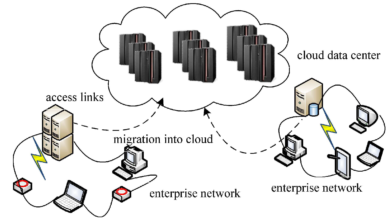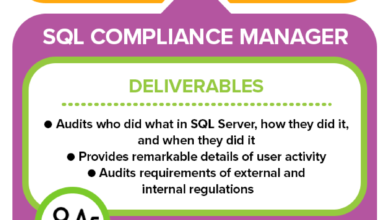Future-proofing Data Servers
In today’s rapidly evolving digital landscape, data servers play a pivotal role in storing and managing vast amounts of crucial information. As technology advances at an exponential rate, it is essential for businesses to future-proof their data servers to ensure longevity and efficiency. This blog article delves into the importance of future-proofing data servers and provides comprehensive insights on how organizations can stay ahead of the curve.
Firstly, understanding the concept of future-proofing is crucial. Future-proofing data servers refers to implementing strategies and technologies that enable seamless scalability, adaptability, and resilience in the face of changing demands and emerging technologies. By adopting a forward-thinking approach, businesses can avoid costly infrastructure upgrades and data migration projects down the road, while optimizing server performance and minimizing downtime.
Building a Scalable Infrastructure
Scalability is a key consideration when future-proofing data servers. To ensure long-term success, businesses must have a scalable infrastructure that can accommodate growing data volumes and evolving business needs. There are several strategies to achieve this:
Flexible Architecture
Building a flexible architecture is essential for scalability. By adopting modular designs and utilizing technologies such as microservices and containers, businesses can easily add or remove components as needed. This flexibility allows for seamless expansion without disrupting existing operations.
Virtualization
Virtualization is another crucial aspect of building a scalable infrastructure. By abstracting physical resources into virtual machines, businesses can dynamically allocate computing power, storage, and network resources based on demand. This not only optimizes resource utilization but also simplifies management and reduces costs.
Elastic Scaling
Elastic scaling allows businesses to scale their infrastructure up or down based on demand. By leveraging cloud technologies and auto-scaling capabilities, organizations can automatically adjust resources to meet fluctuating workloads. This ensures optimal performance during peak periods while avoiding unnecessary costs during periods of low activity.
By adopting these strategies, businesses can future-proof their data servers by ensuring their infrastructure can easily adapt to changing demands and accommodate growing data volumes.
Embracing Cloud Technologies
The cloud has revolutionized the way businesses store and process data. By embracing cloud technologies, organizations can future-proof their data servers in several ways:
Cost Savings
One of the key benefits of the cloud is cost savings. By leveraging cloud infrastructure, businesses can reduce the need for upfront capital investments in hardware, maintenance, and upgrades. Pay-as-you-go pricing models allow organizations to scale resources based on demand, ensuring they only pay for what they use.
Enhanced Accessibility and Flexibility
The cloud provides enhanced accessibility and flexibility for data servers. With cloud-based solutions, businesses can access their data from anywhere, enabling remote work and collaboration. Additionally, cloud platforms offer a wide range of services and APIs, allowing organizations to easily integrate their data servers with other applications and services.
Data Redundancy and Disaster Recovery
Cloud technologies offer robust data redundancy and disaster recovery capabilities. By replicating data across multiple geographic regions, businesses can ensure data availability even in the event of hardware failures or natural disasters. Cloud providers also offer backup and recovery services, simplifying the implementation of comprehensive disaster recovery plans.
By embracing cloud technologies, businesses can future-proof their data servers by leveraging the scalability, cost savings, accessibility, and disaster recovery capabilities offered by cloud platforms.
Ensuring Redundancy and Data Protection
Data loss can be catastrophic for any organization. To future-proof data servers, it is crucial to implement robust redundancy and data protection mechanisms. The following strategies can help achieve this:
Backup and Restore Strategies
Implementing regular backup and restore strategies is essential for data protection. Businesses should establish a well-defined backup schedule, ensuring that critical data is backed up frequently. It is important to consider off-site backups to protect against physical damage or theft.
High-Availability Configurations
High-availability configurations ensure continuous operations even in the event of hardware failures or maintenance activities. By implementing redundant hardware components and failover mechanisms, businesses can minimize downtime and maintain data availability. This can include technologies such as redundant power supplies, network interfaces, and disk arrays.
Fault-Tolerant Architectures
Fault-tolerant architectures are designed to handle hardware failures without impacting data integrity or availability. By implementing redundancy at the hardware, network, and software levels, organizations can ensure that data servers continue to function seamlessly even in the face of failures. This can involve technologies such as RAID (Redundant Array of Independent Disks) and clustering.
Data Encryption
Encryption is a critical aspect of data protection. By encrypting data at rest and in transit, businesses can safeguard sensitive information from unauthorized access. Encryption technologies such as SSL/TLS (Secure Sockets Layer/Transport Layer Security) and disk-level encryption provide an additional layer of security for future-proofing data servers.
By implementing these redundancy and data protection strategies, businesses can future-proof their data servers by safeguarding against data loss, ensuring data availability, and maintaining data integrity.
Maximizing Energy Efficiency
In today’s environmentally conscious world, maximizing energy efficiency is paramount. By adopting energy-efficient practices, businesses can future-proof their data servers while reducing operational costs and environmental impact. The following strategies can help achieve this:
Hardware Selection
Choosing energy-efficient server hardware is a fundamental step in maximizing energy efficiency. Investing in servers with high energy efficiency ratings, such as ENERGY STAR certified devices, can significantly reduce power consumption. Additionally, selecting hardware components with advanced power management features can optimize energy usage.
Virtualization
Virtualization plays a crucial role in maximizing energy efficiency. By consolidating multiple physical servers onto a single server through virtualization, businesses can reduce power consumption and cooling requirements. Virtualization allows for better utilization of resources, resulting in a smaller physical footprint and lower energy costs.
Power Management Techniques
Implementing power management techniques can further optimize energy efficiency. This includes practices such as adjusting power settings to reduce energy consumption during periods of low activity, implementing power capping to limit power usage, and utilizing power monitoring tools to identify energy inefficiencies.
Cooling Optimization
Cooling is a significant contributor to energy consumption in data centers. Optimizing cooling systems through techniques such as hot aisle/cold aisle containment, efficient airflow management, and utilizing energy-efficient cooling technologies can reduce cooling requirements and energy consumption.
By implementing these energy-efficient practices, businesses can future-proof their data servers while reducing operational costs and minimizing their environmental impact.
Upgrading Storage and Connectivity
As data storage requirements continue to skyrocket, upgrading storage and connectivity options is crucial for future-proofing data servers. The following strategies can help organizations keep up with growing data volumes and evolving connectivity needs:
Solid-State Drives (SSDs)
Upgrading to solid-state drives (SSDs) can significantly enhance storage performance and future-proof data servers. Compared to traditional hard disk drives (HDDs), SSDs offer faster data access and transfer speeds, lower latency, and increased reliability. SSDs also consume less power and generate less heat, contributing to energy efficiency.
Non-Volatile Memory Express (NVMe)
Implementing Non-Volatile Memory Express (NVMe) technology can further optimize storage performance. NVMe is a high-speed, low-latency interface designed for flash-based storage devices, including SSDs. By leveraging NVMe, data servers can achieve faster data transfer rates, reduced latency, and improved overall storage performance.
High-Speed Networking Protocols
Upgrading connectivity options is essential for future-proofing data servers. High-speed networking protocols, such as Ethernet and InfiniBand, enable faster data transfer rates and lower latency, facilitating efficient communication between data servers and other network devices. Upgrading to higher bandwidth options can accommodate increasing data traffic and support emerging technologies.
Storage Area Network (SAN)
Implementing a Storage Area Network (SAN) can provide centralized, scalable, and high-performance storage solutions. SANs allow for the consolidation of storage resources, enabling data servers to access shared storage devices. By separating storage from individual servers, organizations can achieve better resource utilization, simplified management, and improved data accessibility.
By upgrading storage and connectivity options, businesses can future-proof their data servers by ensuring they can efficiently handle growing data volumes and support evolving connectivity requirements.
Implementing Security Best Practices
With cyber threats becoming increasingly sophisticated, robust security measures are essential for future-proofing data servers. Implementing the following security best practices can help organizations protect their data and ensure the longevity and integrity of their data servers:
Encryption
Implementing encryption is a fundamental security measure. By encrypting data at rest and in transit, businesses can protect sensitive information from unauthorized access. Strong encryption algorithms, such as AES (Advanced Encryption Standard), and secure key management practices should be employed to ensure data confidentiality.
Access Controls
Implementing access controls is crucial for limiting access to data servers. Role-based access control (RBAC) and strong authentication mechanisms, such as multi
Access Controls
Implementing access controls is crucial for limiting access to data servers. Role-based access control (RBAC) and strong authentication mechanisms, such as multi-factor authentication (MFA), should be employed to ensure that only authorized individuals can access sensitive data. Regularly reviewing and updating access privileges is also essential to maintain data security.
Network Segmentation
Network segmentation plays a vital role in preventing unauthorized access and containing potential security breaches. By dividing the network into separate segments or VLANs (Virtual Local Area Networks), organizations can isolate sensitive data and limit the impact of a security incident. Implementing firewalls and intrusion detection systems (IDS) between network segments provides an additional layer of security.
Regular Security Audits
Regular security audits are essential to identify vulnerabilities and ensure ongoing compliance with security standards. Conducting penetration testing, vulnerability assessments, and security audits help organizations proactively identify and address security weaknesses. It is crucial to stay updated with the latest security patches and software updates to mitigate known vulnerabilities.
Employee Training and Awareness
Employees play a critical role in data security. Providing thorough training programs and raising awareness about security best practices, such as identifying phishing attempts and practicing strong password hygiene, can significantly reduce the risk of security breaches caused by human error. Regular security awareness campaigns and ongoing education help create a security-conscious culture within the organization.
By implementing these security best practices, businesses can future-proof their data servers by safeguarding against evolving cyber threats and ensuring the integrity and confidentiality of their data.
Adopting Artificial Intelligence and Machine Learning
Artificial intelligence (AI) and machine learning (ML) are transforming the way data servers operate. By adopting AI and ML technologies, organizations can future-proof their data servers in several ways:
Predictive Analytics for Proactive Maintenance
Predictive analytics powered by AI and ML algorithms can help organizations identify potential hardware failures or performance bottlenecks in advance. By analyzing historical data and patterns, data servers can predict when components are likely to fail and take proactive measures to prevent downtime. This approach helps optimize server performance, minimize disruption, and extend the lifespan of hardware.
Ngadsen test2
Intelligent Workload Optimization
AI and ML algorithms can optimize workload distribution across data servers by analyzing real-time data, resource utilization, and workload patterns. By dynamically allocating resources based on demand, organizations can achieve better performance, reduce resource wastage, and ensure efficient utilization of server capabilities. Intelligent workload optimization also enables organizations to respond effectively to changing demands and maintain optimal performance levels.
Anomaly Detection and Security Monitoring
AI and ML algorithms can enhance security monitoring by detecting anomalous behavior and identifying potential security breaches. By analyzing network traffic, access patterns, and system logs, data servers can identify and respond to suspicious activities in real-time. This proactive approach helps organizations detect and mitigate security threats before they cause significant damage.
Automated Data Management and Analysis
AI and ML technologies can automate data management and analysis processes, making them more efficient and accurate. By leveraging algorithms for data classification, extraction, and analysis, organizations can streamline data server operations, improve data quality, and gain valuable insights from their data. This automation frees up human resources and allows data servers to handle larger volumes of data efficiently.
By adopting AI and ML technologies, organizations can future-proof their data servers by leveraging advanced analytics, optimizing workloads, enhancing security monitoring, and automating data management processes.
Monitoring and Performance Optimization
Continuous monitoring and performance optimization are vital for maintaining efficient data servers. The following strategies can help organizations future-proof their data servers by ensuring optimal performance:
Real-time Monitoring
Real-time monitoring allows organizations to track the performance of their data servers and identify potential bottlenecks or issues as they arise. By implementing monitoring tools and dashboards, businesses can gain insights into server health, resource utilization, and network traffic. Real-time monitoring enables proactive problem identification and resolution, minimizing downtime and improving overall performance.
Capacity Planning
Capacity planning involves analyzing historical data and future projections to determine the required resources for optimal performance. By understanding current and future demands, organizations can allocate resources effectively and plan for future growth. Capacity planning helps avoid resource shortages, ensure scalability, and optimize cost-efficiency.
Performance Tuning
Performance tuning involves fine-tuning data servers to maximize their efficiency and responsiveness. By optimizing server configurations, adjusting parameters, and utilizing performance-enhancing technologies, organizations can improve data processing speeds, reduce latency, and enhance overall performance. Performance tuning should be an ongoing process to adapt to changing workloads and maintain optimal performance levels.
Automation and Predictive Analytics
Automation and predictive analytics can significantly enhance monitoring and performance optimization. By leveraging automation tools and AI-driven analytics, organizations can automate routine tasks, identify performance trends, and predict potential issues. This proactive approach helps organizations take preventive measures, optimize resource allocation, and improve overall data server performance.
By implementing these monitoring and performance optimization strategies, organizations can future-proof their data servers by maintaining optimal performance, minimizing downtime, and effectively managing resources.
Addressing Compliance and Regulatory Requirements
Compliance with industry regulations and data protection laws is paramount for organizations. Future-proofing data servers involves addressing compliance requirements effectively. The following strategies can help organizations ensure compliance and regulatory adherence:
Data Governance
Implementing data governance policies and frameworks ensures that data is managed and protected in accordance with regulatory requirements. Data classification, access controls, data retention policies, and audit trails are crucial components of data governance. By establishing clear guidelines and accountability, organizations can ensure data integrity, confidentiality, and compliance.
Privacy Controls
Complying with privacy regulations, such as the General Data Protection Regulation (GDPR), requires organizations to implement appropriate privacy controls. This includes obtaining consent for data collection and processing, anonymizing or pseudonymizing personal data, and providing individuals with the right to access, correct, and delete their data. Privacy controls ensure that data servers are aligned with privacy laws and protect individuals’ rights.
Audit Trails and Monitoring
Implementing audit trails and monitoring mechanisms is essential for demonstrating compliance and conducting internal audits. By keeping detailed records of data access, modifications, and system activities, organizations can track and investigate any security breaches or non-compliant activities. Regular monitoring and auditing help identify vulnerabilities and ensure ongoing compliance.
Regulatory Updates and Compliance Programs
Staying updated with regulatory changes and implementing compliance programs is crucial for future-proofing data servers. Organizations should closely monitor regulatory updates and adjust their data protection and security practices accordingly. Implementing compliance programs, including regular training and awareness initiatives, ensures that employees understand their responsibilities and follow best practices.
By addressing compliance and regulatory requirements, organizations can future-proof their data servers by ensuring legal compliance, protecting sensitive data, and maintaining trust with customers and stakeholders.
Embracing Emerging Technologies
The technology landscape is ever-evolving, and staying ahead of emerging trends is crucial for future-proofing data servers. By embracing emerging technologies, organizations can adapt to evolving demands and leverage new opportunities. The following technologies have the potential to impact data server infrastructure:
Edge Computing
Edge computing brings computation and data storage closer to the source of data generation, reducing latency and improving real-time processing capabilities. By distributing data processing tasks to edge devices, organizations can handle data locally and reduce the load on centralized data servers. Edge computing is particularly valuable in applications that require low latency, such as IoT (Internet of Things) and real-time analytics.
Quantum Computing
Quantum computing has the potential to revolutionize data processing capabilities. By leveraging quantum bits (qubits) and quantum algorithms, quantum computers can solve complex problems much faster than traditional computers. While still in its early stages, quantum computing has the potential to significantly impact data server infrastructure, enabling faster data analysis, encryption, and optimization algorithms.
Blockchain
Blockchain technology provides a secure and transparent method for storing and verifying transactions. By utilizing decentralized and distributed ledger systems, organizations can ensure data integrity, eliminate the need for intermediaries, and enhance trust in data servers. Blockchain has applications in various industries, including finance, supply chain, and healthcare, where data security and immutability are critical.
Artificial Intelligence Integration
The integration of AI technologies with data servers can enhance data processing capabilities and decision-making. By leveraging AI algorithms for data analysis, pattern recognition, and anomaly detection, organizations can extract valuable insights from vast amounts of data. AI integration enables data servers to automate tasks, optimize processes, and provide intelligent recommendations based on data analysis.
By embracing emerging technologies, organizations can future-proof their data servers by adapting to new paradigms, leveraging advanced capabilities, and staying ahead of the technological curve.
In conclusion, future-proofing data servers is vital for organizations seeking to thrive in an increasingly data-driven world. By following the strategies and best practices outlined in this article, businesses can ensure the longevity, efficiency, and resilience of their data server infrastructure. Embracing scalability, cloud technologies, redundancy, energy efficiency, security, emerging technologies, and compliance requirements are key pillars to future-proofing data servers and staying ahead of the curve.Future-proofing data servers requires a proactive approach, considering both current and anticipated future needs. Building a scalable infrastructure is essential to accommodate growing data volumes and evolving business requirements. By adopting a flexible architecture and leveraging virtualization techniques, organizations can easily scale their data servers without disrupting operations.
Embracing cloud technologies is another crucial aspect of future-proofing data servers. Cloud platforms offer cost savings, enhanced accessibility, data redundancy, and disaster recovery capabilities. Businesses can leverage cloud deployment models, such as public, private, or hybrid clouds, to seamlessly integrate their data servers and optimize resource utilization.
Ensuring redundancy and data protection is paramount to future-proofing data servers. Implementing backup and restore strategies, high-availability configurations, fault-tolerant architectures, and data encryption techniques safeguard data against loss and unauthorized access. These measures ensure continuous operations and data integrity, even in the face of hardware failures or security breaches.
Maximizing energy efficiency is not only environmentally responsible but also financially beneficial. By selecting energy-efficient server hardware, leveraging virtualization, implementing power management techniques, and optimizing cooling systems, businesses can reduce operational costs and minimize their carbon footprint while future-proofing data servers.
Upgrading storage and connectivity options is crucial to accommodate the ever-increasing data storage demands. Solid-state drives (SSDs), non-volatile memory express (NVMe) technology, high-speed networking protocols, and storage area networks (SANs) enable faster data access, improved performance, and efficient resource utilization.
Implementing robust security measures is essential to protect data servers from evolving cyber threats. Encryption, access controls, network segmentation, and regular security audits are crucial components of a comprehensive security strategy. By staying updated with the latest security patches and protocols, organizations can mitigate vulnerabilities and safeguard their data.
Adopting artificial intelligence and machine learning technologies can optimize data server operations. Predictive analytics, intelligent workload optimization, anomaly detection, and automated data management and analysis enhance performance, proactive maintenance, and security monitoring. These technologies enable data servers to adapt to changing demands and improve overall efficiency.
Continuous monitoring and performance optimization are vital for maintaining efficient data servers. Real-time monitoring, capacity planning, performance tuning, and automation help identify and address performance bottlenecks, ensure resource availability, and prevent downtime. By staying proactive and responsive, organizations can optimize data server performance and achieve long-term efficiency.
Addressing compliance and regulatory requirements is a critical aspect of future-proofing data servers. Establishing data governance frameworks, implementing privacy controls, maintaining audit trails, and staying updated with regulatory changes ensure legal compliance and protect sensitive data. By following best practices, organizations can maintain trust with customers and stakeholders.
Embracing emerging technologies allows organizations to stay ahead of the technological curve and future-proof their data servers. Edge computing, quantum computing, blockchain, and the integration of artificial intelligence offer new opportunities for data processing, security, and decision-making. By embracing these technologies, organizations can leverage their potential and remain competitive.
In conclusion, future-proofing data servers requires a holistic approach that encompasses scalability, cloud technologies, redundancy, energy efficiency, security, compliance, and emerging technologies. By implementing the strategies and best practices discussed in this article, organizations can ensure the longevity, efficiency, and resilience of their data server infrastructure. Future-proofing data servers is not only about adapting to current needs but also anticipating and preparing for future challenges and opportunities in the rapidly evolving digital landscape.



